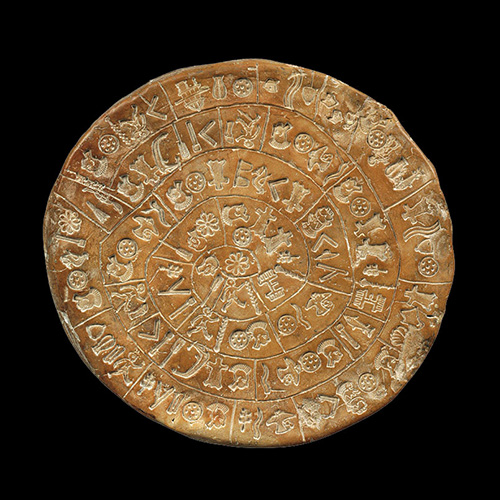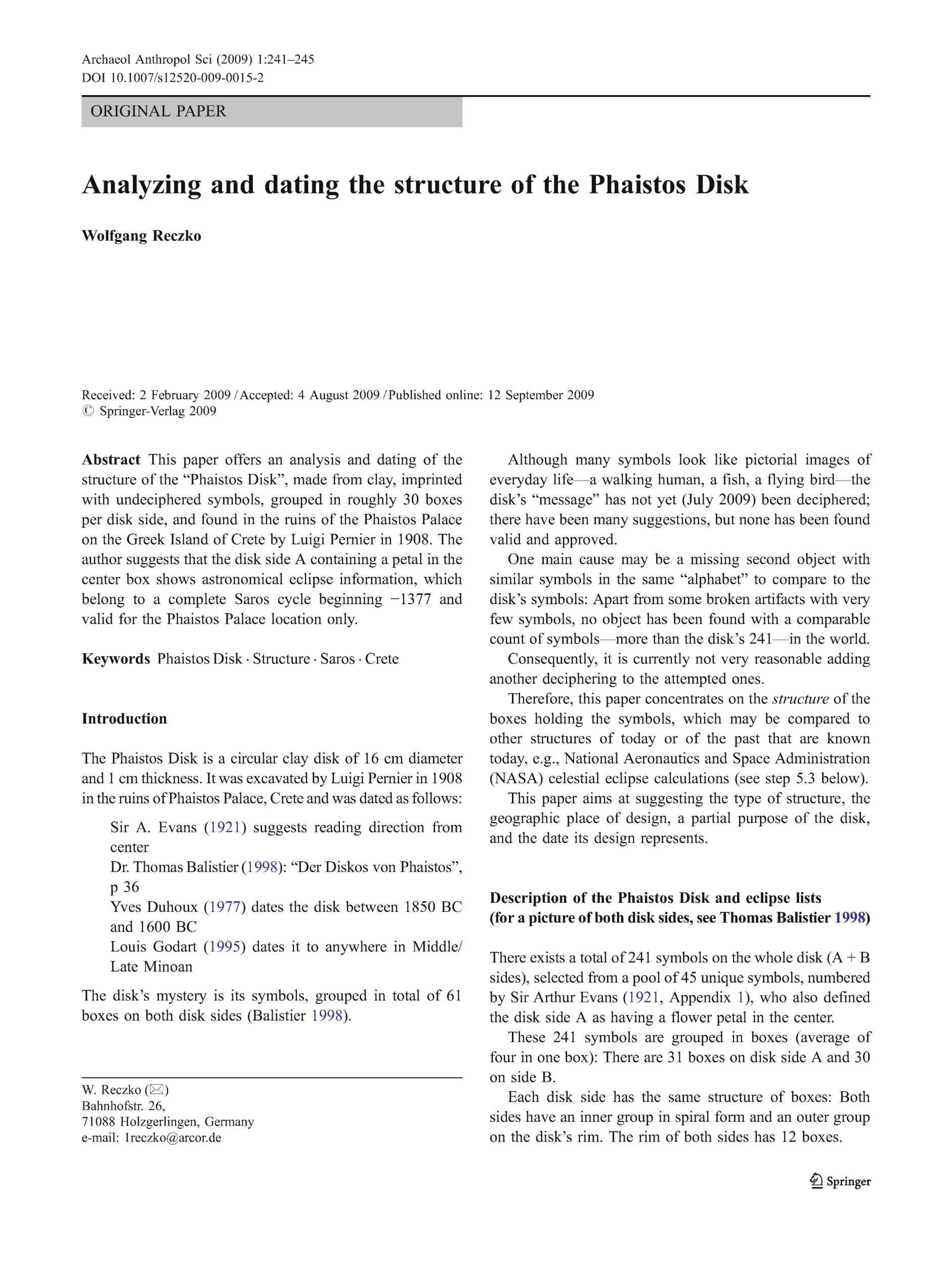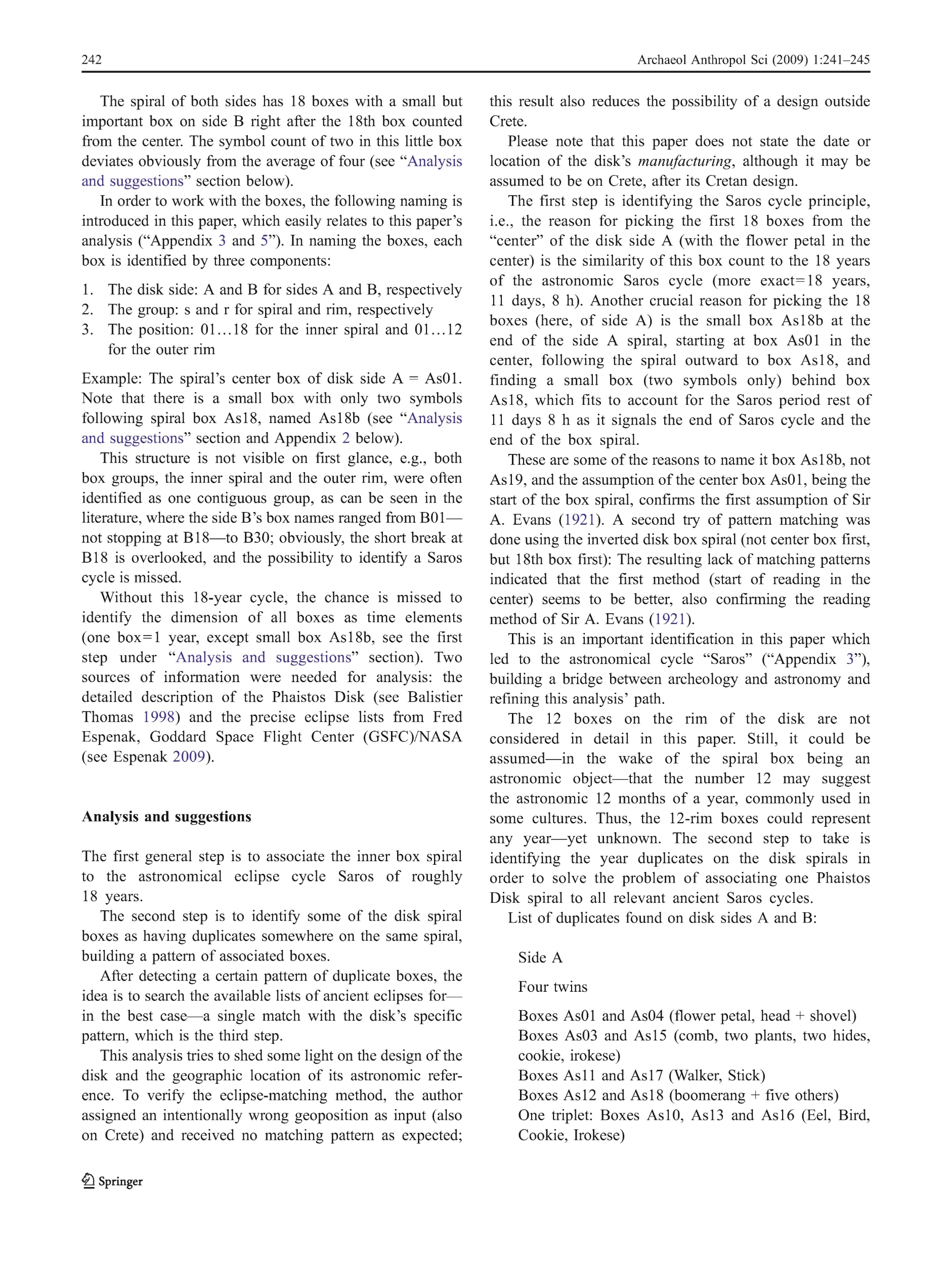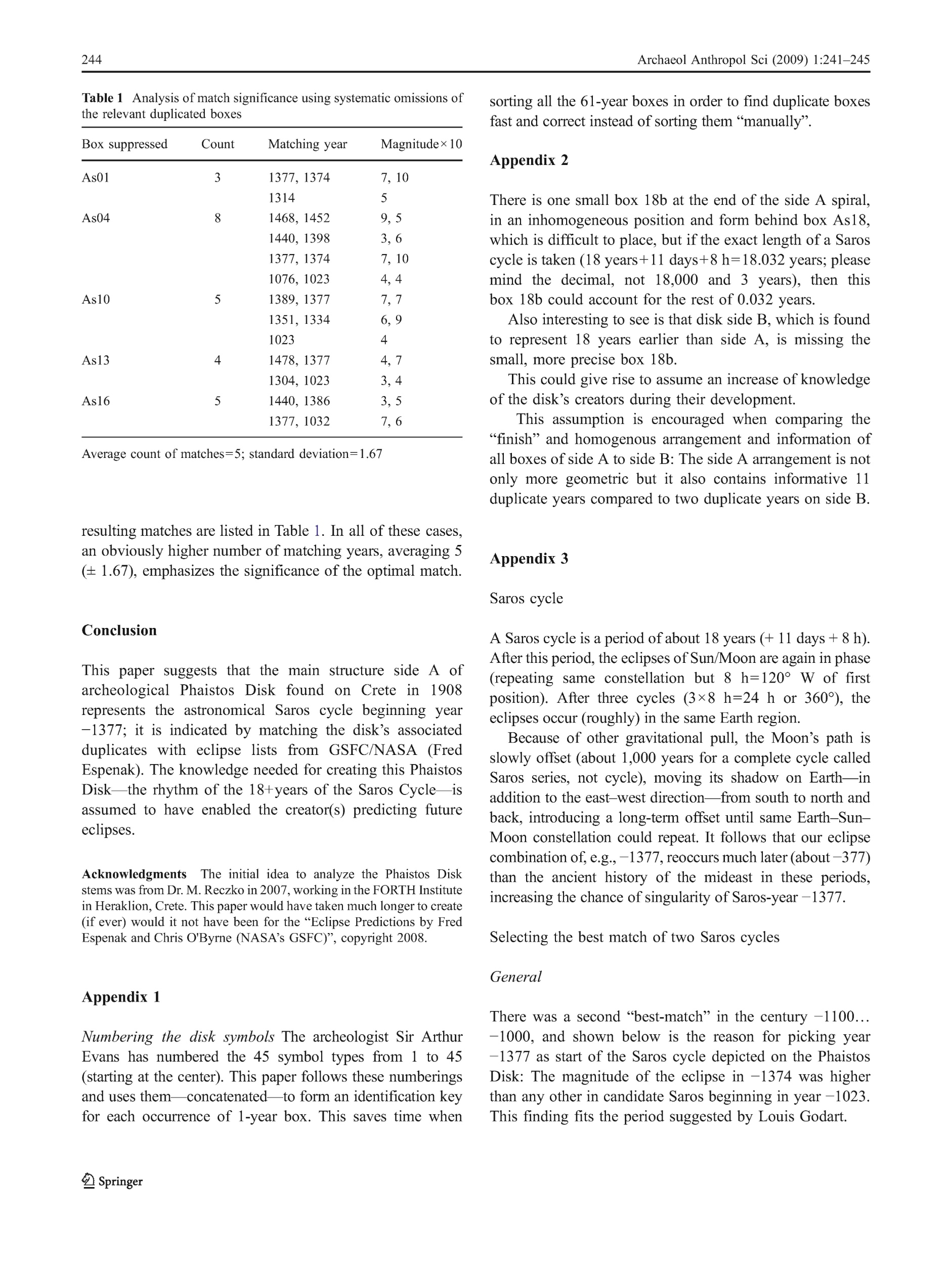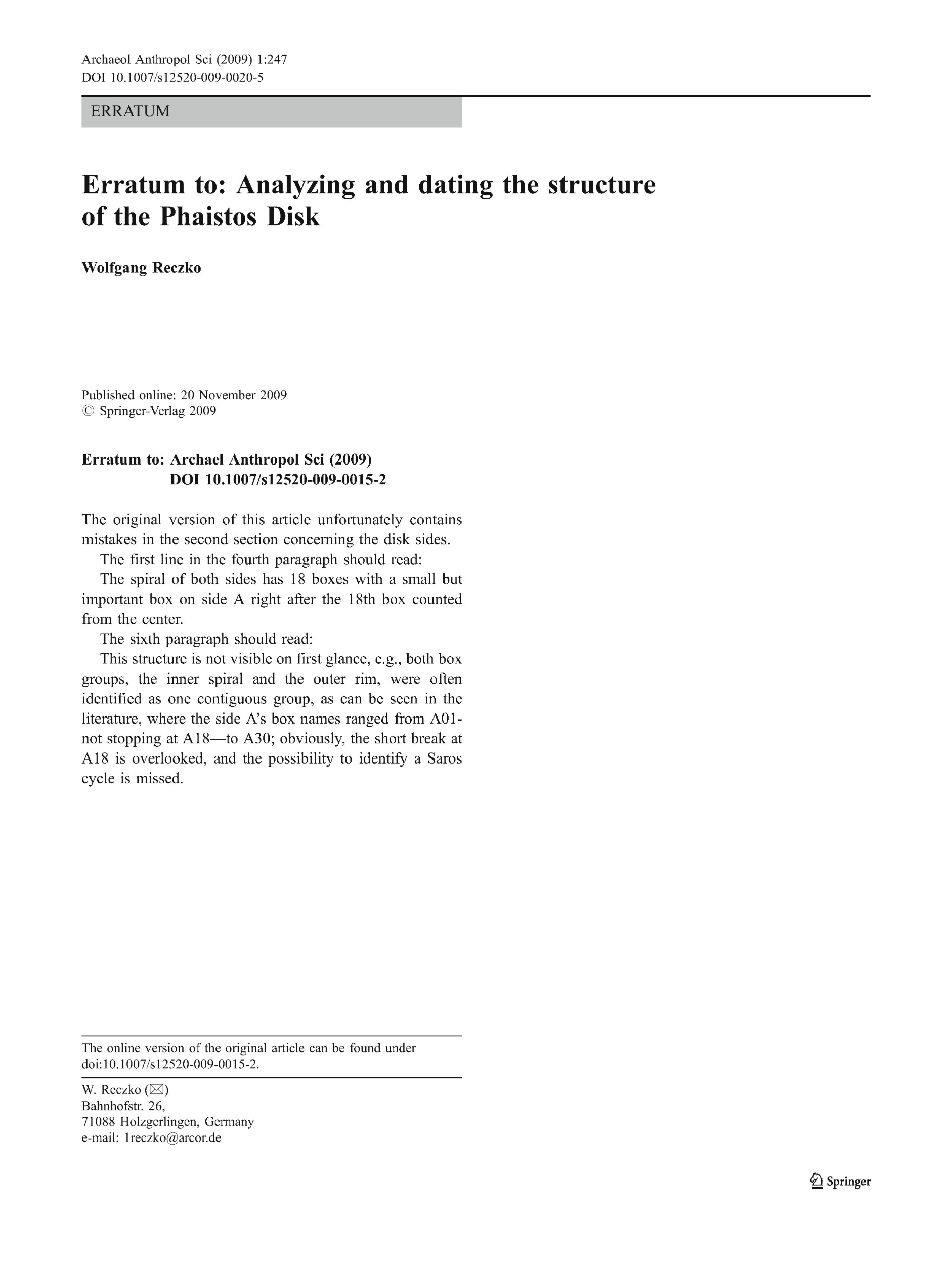About
Wolfgang Reczko's 2009 "Phaistos Disk" article provides analysis concerning the date and structure of a Minoan artifact called The Phaistos Disk. The author suggests that Side A of the disk represents an eclipse formation which may date it to 1377 BCE.
Source: OMNIKA
Abstract: This paper offers an analysis and dating of the structure of the “Phaistos Disk”, made from clay, imprinted with undeciphered symbols, grouped in roughly 30 boxes per disk side, and found in the ruins of the Phaistos Palace on the Greek Island of Crete by Luigi Pernier in 1908. The author suggests that the disk side A containing a petal in the center box shows astronomical eclipse information, which belong to a complete Saros cycle beginning −1377 and valid for the Phaistos Palace location only.
This paper offers an analysis and dating of the
structure of the “Phaistos Disk”, made from clay, imprinted
with undeciphered symbols, grouped in roughly 30 boxes
per disk side, and found in the ruins of the Phaistos Palace
on the Greek Island of Crete by Luigi Pernier in 1908. The
author suggests that the disk side A containing a petal in the
center box shows astronomical eclipse information, which
belong to a complete Saros cycle beginning −1377 and
valid for the Phaistos Palace location only.Source: Author or Publisher
expand_more Read more Read less
Access
Read for free
External sources
Primary
Myth
On Side A, the solar figure is first affirmed as the chief ruler. The author then asks for the figure to shine warmth and show its rays in order that the people can be assisted while sailing. On Side B, water is described as flowing westward to Iberia. An Iberian king's twenty daughters are described as watching (perhaps lamenting) the horizon as the sun is chased away by the other stars. Arrows are described as being shot, perhaps toward or from Sagittarius. Finally, the light drifts away to Asia and ascends again when the stars chase it back, ending the poem.
Belief system
Minoan culture refers to spiritual beliefs and customs practiced by peoples living in Crete and some Aegean islands between ca. 2800-1450 BCE.
Deity

The Minoan Solar Proto-Deity may represent the sun according to proto-myths in Linear A or Cretan Hieroglyphs. The figure may also be visible in Minoan material culture.
Myths cited
It looks like only the main myth was referenced in this work.
Belief systems cited
It looks like only the main belief system was referenced in this work.
Artifacts cited
Contributor
Cite this work
ChicagoReczko, Wolfgang. "Analyzing and Dating the Structure of the Phaistos Disk." Archaeological and Anthropological Sciences 1, 241 (2009): 241–245. [Includes erratum published in November 2009]
